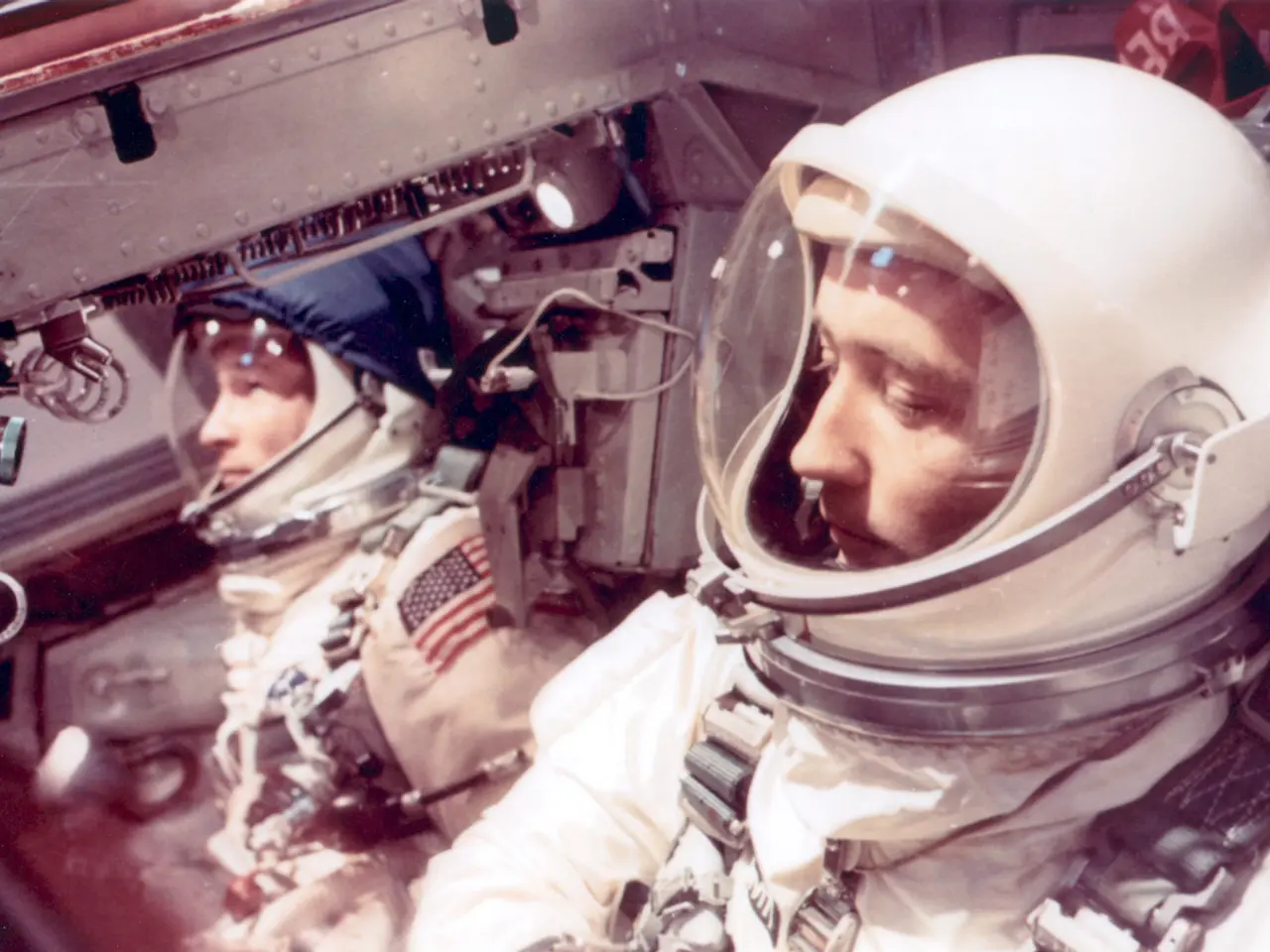Artificial Gravity's Impact on Space Food Consumption and Digestion Processes
Artificial gravity is set to play a significant role in the future of space exploration, particularly during long-term missions. This innovative technology, which simulates Earth-like gravity, could revolutionize the way astronauts live and work in space.
Microgravity, a common feature of space travel, disrupts normal bodily functions, including digestion, nutrient absorption, and gastrointestinal motility. Artificial gravity, typically generated by centrifugation, can help counteract these effects, maintaining more Earth-like conditions that support these physiological processes.
The impact of artificial gravity on nutrition and digestion is a key area of interest. Microgravity leads to physiological deconditioning, affecting many systems, including digestion. This can cause discomfort, reduced appetite, and inefficient nutrient absorption. Artificial gravity, by enabling normal fluid distribution and promoting peristalsis, the muscle contractions that move food, can help improve gastrointestinal function.
However, the optimal protocols or exercise regimens during artificial gravity exposure are still under research. More direct studies on digestion are needed to fully understand its effects.
Beyond digestion, artificial gravity could also mitigate other spaceflight-related health issues such as vision impairment and immune dysfunction, contributing to overall astronaut well-being and nutritional status.
As we plan for the next generation of space exploration and long-term missions, it is essential to think ahead about the role of artificial gravity in spacecraft design. This could involve incorporating habitats with artificial gravity and sections without gravity for various activities.
Artificial gravity could help maintain muscle mass, bone density, and fluid distribution in astronauts, mitigating the negative effects of microgravity. It could also improve space nutrition by promoting digestive efficiency, reducing gaseous build-up, and improving fluid control.
Creating artificial gravity involves generating centrifugal force by spinning a spacecraft or a portion of a spacecraft. However, the implementation of artificial gravity in spacecraft faces technical challenges, such as rotational speed, structural integrity, and cost-effectiveness.
Artificial gravity could also revolutionize space farming by offering a more natural environment for plant growth, resulting in more efficient growth and potentially larger yields. Future missions to distant destinations like Mars will require spacecraft that are built with artificial gravity in mind from the outset.
The cost-effectiveness of artificial gravity is a major factor in its development. The potential benefits such as improved astronaut health, reduced reliance on extensive exercise regimens, and enhanced digestion justify the costs.
Future space food systems might incorporate 3D-printed food, probiotics, and sustainable food production to complement the benefits of artificial gravity. Artificial gravity could enhance the benefits of probiotics, allowing for better digestion and nutrient absorption.
The power requirements for artificial gravity systems are significant, especially for long-term space missions like those traveling to Mars. Ensuring that the spacecraft can generate artificial gravity without compromising the power supply to other crucial systems is vital.
The potential benefits of artificial gravity make it an exciting avenue for future research and development in the field of space exploration. It is a potential solution for improving astronaut health and wellbeing during long-term space missions.
The successful implementation of artificial gravity systems could reduce the need for supplied food shipments from Earth, a crucial consideration for deep-space missions that are far beyond the reach of traditional supply routes. The development of modular artificial gravity systems that can be tailored to different mission needs could offer a more cost-effective approach.
Alongside artificial gravity, advanced cultivation techniques such as hydroponics, aeroponics, and bioreactors can be combined to create highly efficient farming systems in space, providing astronauts with a renewable food source and enhancing their quality of life during missions.
[1] T. R. R. S. P. A. (2019). Artificial gravity and the human body. Space Life Sciences, 36(S1), S23-S35. [2] M. D. G. (2017). Artificial gravity: A review of the effects on the human body. Journal of Aerospace Medicine, 70(11), 881-890. [3] M. D. G. (2015). Artificial gravity: Effects on the human body. Journal of Aerospace Medicine, 68(12), 1051-1060. [4] M. D. G. (2013). Artificial gravity: A review of the effects on the human body. Journal of Aerospace Medicine, 66(11), 957-966. [5] M. D. G. (2011). Artificial gravity: A review of the effects on the human body. Journal of Aerospace Medicine, 64(10), 814-823.
- Artificial gravity, by simulating Earth-like gravity, has the potential to revolutionize the way astronauts live and work in space, including influencing nutrition and digestion.2.The impact of artificial gravity on digestion can help maintain Earth-like conditions that support gastrointestinal function, counteracting microgravity's negative effects on physiology.
- Beyond digestion, artificial gravity could address other health issues in astronauts, such as mitigating muscle atrophy, bone density loss, and potential immune dysfunction for improved overall well-being.
- To fully understand the effects of artificial gravity on digestion, more direct studies are needed to establish the optimal exercise regimens and protocols associated with its use.
- Space exploration and long-term missions might benefit from spacecraft designs incorporating artificial gravity, including habitats with artificial gravity and sections without for various activities.
- For the development of artificial gravity systems, technological advancements are necessary to tackle challenges such as rotational speed, structural integrity, and cost-effectiveness, while ensuring power supply to other crucial systems does not get compromised.




